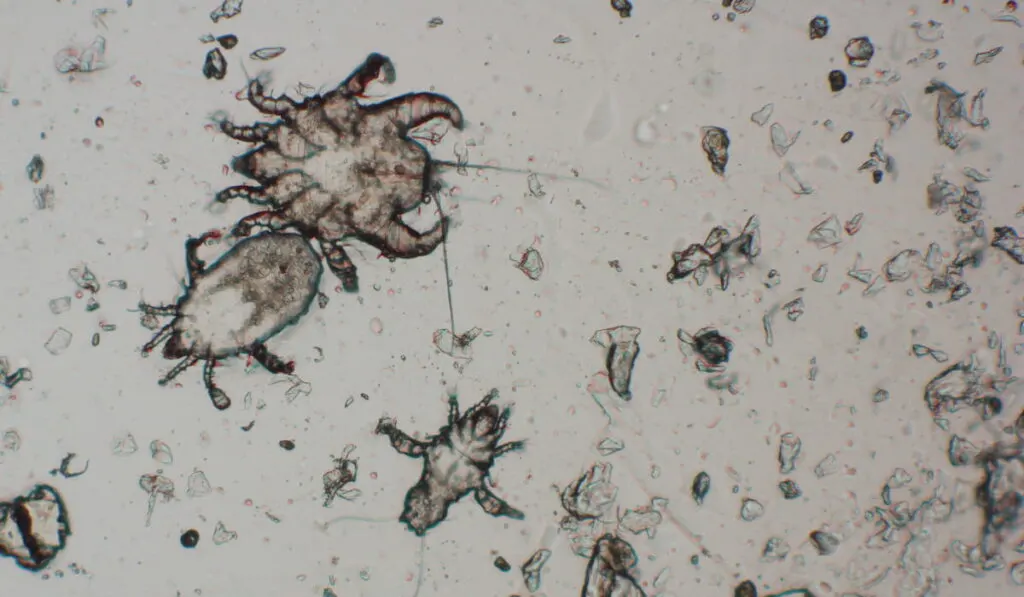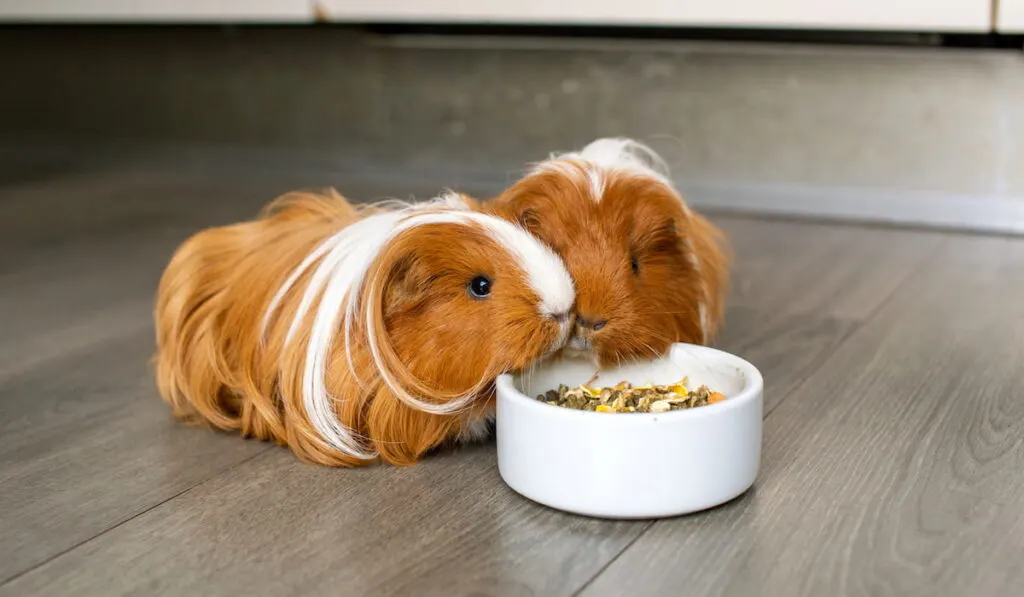Shedding is a phenomenon common to all furry or hairy mammals. And since guinea pigs are mammals with fur, it isn’t out of place to ask if they shed.
So, do guinea pigs shed?
Guinea pigs do shed.
They are furry mammals, and as expected of any furry mammal, they shed the past season’s hair. While they are generally considered light to medium shedders, they can shed heavily, especially in spring. Plus, long-haired guinea pig breeds shed more than the short-haired types.
There is more to guinea pig shedding than what we summarized above. So, in this article, we’ll go over the topic further. We talk about the reasons they shed, when they shed, and more.
Table of Contents
Dealing With Guinea Pig Shedding
As expected of any furry mammal, guinea pigs shed. And like every other furry critter, they shed in response to seasonal changes.
Guinea pigs are known to lose heavy volumes of fur in the spring. But they may also shed at any other time of the year.
Based on hair length, guinea pigs can either be long-haired or short-haired. Of both groups of guinea pigs, the long-haired varieties shed more volumes of fur. So, they typically require more attention when it comes to grooming.
Guinea pigs breeds such as Texel, Peruvian, and Silkie are examples of long-haired varieties. And as stated already, they shed more hair than many other breeds.
Fur shedding might be undesirable to pet owners, but it doesn’t have to be why you do not keep a guinea pig. While you cannot stop shedding in guinea pigs, you can reduce the rate of occurrence.
Doing something as simple as brushing the fur of your guinea pig every week can help keep shedding at a minimum.
By brushing your guinea pig’s fur, you prevent knotting and keep it from getting dirty, which can reduce the shedding rate.
If you brush your guinea pig’s fur, it is better to do it outside. This way, you will not litter the room or trigger anyone’s allergy.
Regular brushing is not the only way to keep your guinea pig’s shedding at a minimum. Regular baths, improved diet, vitamin C supplementation, hair trimming, and regular cage cleaning can also help.

What Season Do They Shed?
As mentioned earlier, guinea pigs shed in response to seasonal changes.
But in what season do they shed?
Spring?
Guinea pigs shed most in spring. This is the one time their shedding is most noticeable. They shed their fur in spring to prepare themselves for the heat that comes with summer.
By losing their extra fur (winter coat), guinea pigs are less insulated. So, they can stay cool in summer.
Since long-haired guinea pigs have more fur than short-haired guinea pigs, they are more likely to shed in spring.
Fall?
In response to the cold that comes with fall, guinea pigs shed in fall. However, the shedding pattern in fall differs from the shedding in spring.
When guinea pigs shed in fall, they lose light summer fur to grow thicker fur for better insulation. This is unlike spring, when they lose extra hair for better cooling.
If you notice your guinea pig shedding in the fall, you may help it shed faster by brushing it regularly. The faster it loses lighter fur, the quicker it can grow the thicker fur.
Winter?
We found no evidence that guinea pigs shed in winter.
Ordinarily, guinea pigs need their fur for insulation in winter. So, under normal conditions, they are unlikely to shed their hair in winter. However, if they suffer from certain parasitic infections or skin problems, they may lose their fur in winter.
Summer?
In early summer, guinea pigs may shed the same way they shed in spring.
What Causes Guinea Pigs to Shed?
Under normal circumstances, shedding is a natural process in guinea pigs. However, sometimes, some things happen, and guinea pigs start shedding abnormally.
The following are some causes of abnormal shedding in guinea pigs:
Stress

When guinea pigs are stressed, they typically shed fur but not in bald patches. Stress that triggers hair loss in guinea pigs can come from losing a cagemate. It may also come from introducing a new pet or an illness unrelated to hair loss.
If you observe that your guinea pig is losing fur at a time different from its usual period, it may be stressed. Try to detect the source of stress and remove it quickly. If you don’t, it may become a concerning health issue.
Barbering
If you notice that your guinea pig is shedding at an unusual period and there is no sign of stress, it may be barbering.
Barbering is a condition in which guinea pigs chew their own fur off. It typically happens when guinea pigs are bored, and sometimes it may involve a guinea pig chewing hair off another guinea pig.
Barbering may not look like much at the start. But sometimes, the guinea pigs can get carried away and bite the skin. If this happens, barbering can become problematic.
You can keep your guinea pig from barbering by providing it with toys and chewing materials. These items will keep its mouth busy and off fur.
Ectoparasites
When the skin of a guinea pig is infested with parasites, it will shed. Lice and mites are two parasitic infestations commonly seen in guinea pigs. Each one of them affects guinea pigs differently.
Lice
When affected, lice live on the skin of a guinea pig. While they do not suck blood, they cause itchiness. Lice may also trigger allergy in guinea pigs.
Due to the itchiness, guinea pigs may scratch and bite themselves to find some relief. Unfortunately, they may develop sores while doing this.
Since lice live on the skin, you might be able to detect them on your guinea pig’s skin. If you do, you can get rid of them using shampoo.
Besides shampooing your guinea pig’s fur, clean the cage and the room it lives in. In fact, if there is any other pet around, shampoo that pet’s fur too.
By doing all of these things, you can reduce the chances of re-infestation.
Mites

It is relatively tougher to protect guinea pigs from mites as they come from various sources. Guinea pigs can get mites from other animals and even from hay. Unfortunately, even high-quality hay may be contaminated with mites.
Mites do not stay on the skin like lice. They get under the skin and cause pain for guinea pigs. In response to infiltrating their skin, guinea pigs start scratching and biting themselves. Of course, this causes them to develop bald patches while their fur generally becomes thinner.
Mite infestations typically start around the groin/genitalia and the front legs. Then the mites spread to other parts of the body.
While it is hard to prevent a mite infestation, it isn’t impossible. One way to keep your guinea pig from getting mites is to wash its fur with a special shampoo a couple of times a year.
If your guinea pig does get infested with mites, the best thing to do is get it to a vet. Besides the vet’s treatment, clean the animal’s cage thoroughly. Shampooing the other pets around may also help prevent reinfestation.
Fungal Skin Infections
Guinea pigs may also shed when they get fungal skin infections such as ringworm.
Ringworm will cause bald patches on the skin. But beyond that, it may also cause the skin to become sensitive, dry, and scaly.
More times than not, ringworm infections start around the head region. But without treatment, the infection may spread.
If your guinea pig has ringworm, get it to a vet. You should also clean the guinea pig’s cage and surroundings to prevent reinfection.
Nutrition Issues

Nutrition issues can also cause shedding in guinea pigs. For one, if guinea pigs do not get enough vitamin C in their meals, they will shed.
Guinea pigs do not make their own vitamin C; they must get it in their diet. They require around 10 to 35 mg/kg of vitamin C daily. However, guinea pig pellets can lose vitamin C content on prolonged storage. So, sometimes guinea pigs may not get enough of the vitamin.
Instead of relying on the pellets for your guinea pig’s vitamin C, you can see a vet for vitamin C tablets. When you get the tablets, break a sufficient dose into powder. Then sprinkle it on your guinea pig’s meals daily.
Try not to add vitamin C to your guinea pig’s water. If you do, the taste of the water may put the guinea pig off. Consequently, it won’t drink the water. Besides, vitamin C degrades pretty fast in water; most of it may be lost before the guinea pig even gets to drink the water.
Ordinarily, a daily dose of 10-35 mg/kg of vitamin C is sufficient for guinea pigs. However, for currently deficient guinea pigs, a dose of up to 50 mg/kg may be necessary. Ask your vet for clarification.
Which Varieties Shed the Most?
Long-haired guinea pig varieties generally shed the most. Breeds like Peruvian, Texel, Sheltie, Abyssinian, and Silkie are some of the high volume shedders.
Which Varieties Shed the Least?
Short-haired varieties like American and White-Crested shed the least.
Final Take
Guinea pigs shed naturally in response to seasonal changes. However, stress, infections/infestations, barbering, and nutritional deficiencies may also make them shed.
While regular grooming/brushing can help minimize natural shedding, you may have to take other steps if the shedding is caused by an unusual circumstance.
Resources
- https://www.omlet.co.uk/guide/guinea_pigs/frequently_asked_questions/reducing_shedding/
- https://mypetguineapig.com/do-guinea-pigs-shed/
- https://smallpethub.com/do-guinea-pigs-shed/
- https://animals.mom.com/shedding-vs-molting-3343.html
- https://www.guineapigtube.com/guinea-pig-illnesses-full-list
- https://www.mariposavet.com/guinea-pigs-vitamin-c-supplementation-know/
- https://lafeber.com/mammals/what-breed-is-my-guinea-pig/
